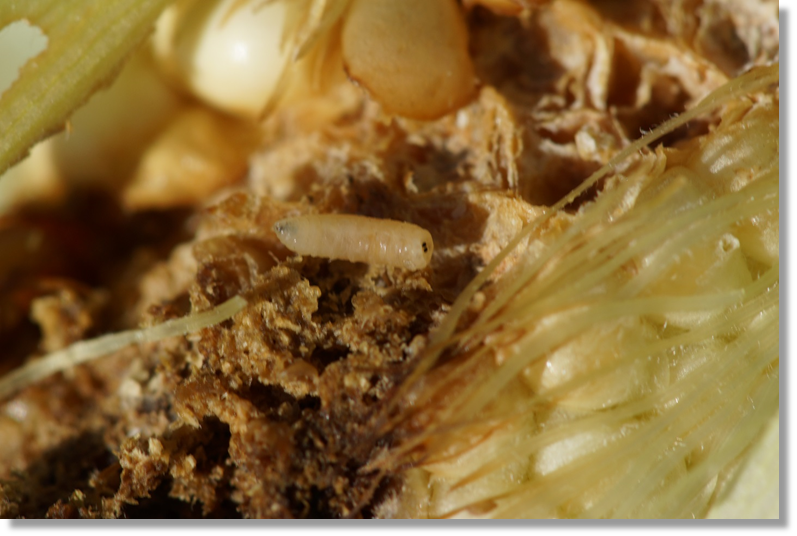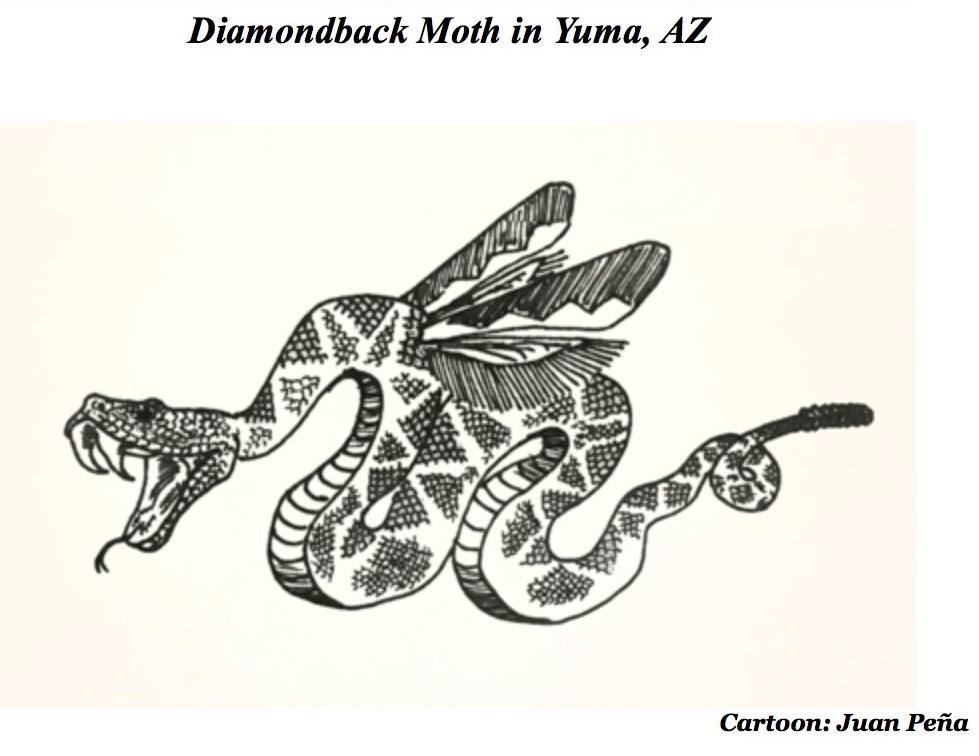
|
|
|
|

|
|||
|
|
|||
The melon spring melon season is progressing smoothly and whitefly populations are quietly becoming abundant on spring melons. We can easily find adults on melons located at the Yuma Ag Center, and reports from local PCAs suggest that adult populations are beginning to build on older plantings. As temperatures increase and crops mature, avoid excessive feeding from whitefly nymphs should be a primary concern on all melon types. Honeydew and sooty mold contamination on fruit of cantaloupes, mixed melons and watermelons can significantly reduce quality and marketability. Now that whitefly adults are becoming noticeable in a number of locations, PCAs should be diligent in their monitoring and sampling. Our research has shown that to prevent melon yield and quality losses, a foliar insecticide treatment should be applied when on a threshold; 2 adult whiteflies per leaf is exceeded when averaged across an entire melon block. At this level of adult abundance, immature populations should just be starting to colonize and timing sprays based on the adult threshold has been shown to significantly reduce the chance of yield / quality loss during harvest. This threshold applies for the use of recommended IGRs (Courier, Knack, Oberon), foliar applied neonicotinoids (Assail, Venom, Scorpion) and Exirel (diamide). For more information, go to these documents on 1) IPM and Whitefly Management, 2) Whitefly Action Thresholds, and 3) Whitefly control options. Also, be aware of honey bees and other pollinators in or around melon fields. If bees are present, be sure to carefully read labels and determine the products bee safety before applying any pesticide in a melon field. Although, Cucurbit Yellow Stunting Disorder Virus (CYSDV) is not generally yield limiting on spring melons, fall melons are at greater risk of CYSDV infection when planted in areas where CYSDV symptoms were found on spring melons. Given the increased cotton acreage this year, it will be important to keep whitefly populations low on spring melons to reduce the dispersal to cotton, other alternative crops and weeds later in June and July. Ultimately, this can reduce the risks of high whitefly numbers and CYSDV on melons this fall. |
|||
| Back | |||
|
For questions or comments on any of the topics please contact Marco Pena at the Yuma Agricultural Center.
|
|||
|
Home |
Cotton | Veggies |
Forages | Grains
| Citrus |
Crop x Crop Insects | Diseases| Weeds | Pesticides | Economics | News | Weather | Research | Photos | Contacts | General Info. Copyright © 2001 University of Arizona, College of Agriculture and Life Sciences Webmaster: Al Fournier (acis@ag.arizona.edu) |
|||


